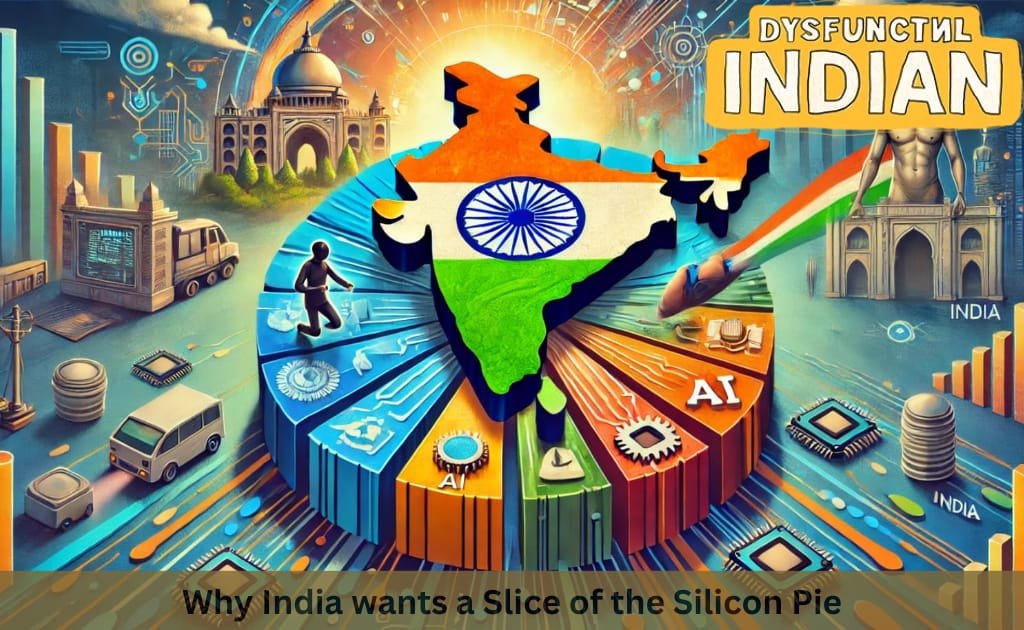Why India Wants a Slice of the Silicon Pie
Posted by admin on 2024-11-21 |

India has made a bold play to become a significant player in the global semiconductor supply chain, a vision orchestrated by Prime Minister Narendra Modi’s government. In a world increasingly driven by technology, semiconductors—tiny chips that power everything from smartphones to AI—are crucial. Recognizing this, India aims to build a domestic chip industry that can not only support its growing digital economy but also establish itself as a global chip hub. However, while the ambition is laudable, the path to semiconductor self-sufficiency is lined with challenges.
India’s Silicon Bet
The semiconductor industry is projected to see a massive investment surge in the coming decade, tripling the investments made in the previous ten years. With global demand for chips skyrocketing due to the rise of technologies like AI, 5G, and electric vehicles, the world is scrambling to diversify chip production away from its heavy concentration in East Asia—namely China, Taiwan, and South Korea. India wants to secure a piece of this pie, but entering the semiconductor game is no small feat.
Policy Promises and Market Myths
India has a lot going for it, starting with a conducive policy environment. The government has rolled out various initiatives and incentives to attract semiconductor investment, such as the Semiconductor Mission, offering financial support for setting up manufacturing units. New Delhi is positioning itself as a lucrative destination with a growing domestic market for semiconductors, especially with the rapid digitization of the economy and the rise of industries like electronics, telecommunications, and automotive manufacturing.
The country’s massive consumer base, rising smartphone usage, and aspirations for technological leadership create a strong case for India becoming a significant player in the semiconductor industry. Moreover, India has the potential to build a robust talent pool, given its highly skilled workforce in the tech and engineering sectors.
Can India Outchip the Giants?
While India’s ambition is admirable, it faces tough competition from established global players like the United States, European Union, and China, all of whom are doubling down on semiconductor production with massive subsidies and incentives. Countries like the US are working to reduce reliance on foreign semiconductor production by building their own chip industries at home, investing billions of dollars to boost domestic capacity.
India’s challenge lies in offering competitive incentives to attract global semiconductor companies to set up shop within its borders. But that’s not all. India’s decision to stay out of the Regional Comprehensive Economic Partnership (RCEP)—a China-led regional trade bloc—has created an additional hurdle. The bloc’s dominance in the global semiconductor supply chain makes it more difficult for India to tap into regional manufacturing networks, as high tariffs can dissuade companies from considering India as a viable alternative. While the RCEP might have allowed easier diversification into India, the country will now need to carve out a space for itself amid stiff competition.
Escaping East Asia’s Silicon Grip
One of the biggest hurdles in India’s semiconductor ambitions is the sheer cost of breaking away from the East Asia semiconductor cluster. China, Taiwan, and South Korea have spent decades building an efficient, cost-effective supply chain that makes it difficult for newcomers to compete. Splitting from this tightly woven network will not only be expensive but also time-consuming. Governments across the world, including India’s, will have to offer substantial support to make their own semiconductor ecosystems competitive. Any faltering in government resolve could allow East Asia to maintain its advantage.
Moreover, chip-making is not just about factories; it requires a specialized talent pool for research, design, and manufacturing. India will need to scale up its efforts in creating skilled professionals who can work on cutting-edge semiconductor technology. Mismatches in the talent supply chain could delay India’s progress.
Will India Strike It Big or Go Bust?
Despite the challenges, India’s opportunity in the semiconductor sector is too significant to ignore. With the global focus on diversifying chip production, India must aggressively position itself with the right mix of policy support and talent development. Silicon diplomacy will be key to success, as India will need to negotiate partnerships, attract investments, and carve out its role in the global semiconductor landscape.
India’s journey to becoming a semiconductor hub will require patience, investment, and strategic alliances. While the road is long and fraught with competition, the rewards, if successful, could cement India’s place as a major player in the technology-driven global economy.









